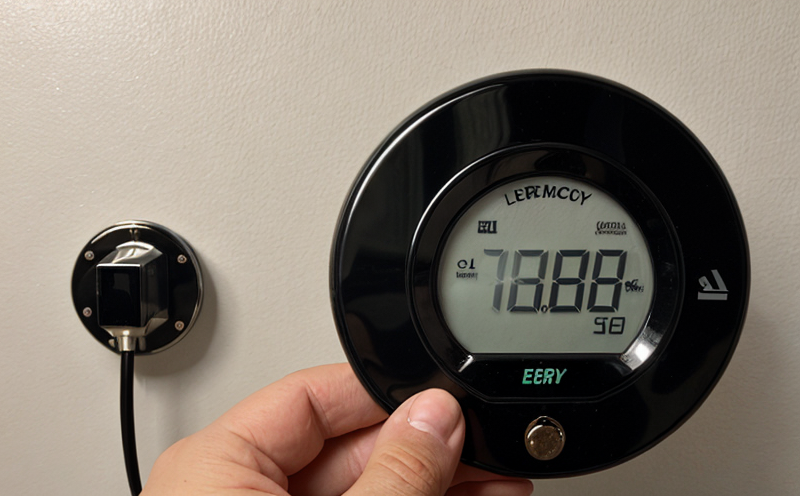ANSI AHAM HAHAM 1 Energy Testing for Household Appliances
The ANSI/AHAM HAHAM 1-2023 standard is a rigorous and comprehensive framework designed to measure the energy efficiency of household appliances, ensuring they meet industry benchmarks while providing accurate and comparable data. This standard applies specifically to refrigerators, freezers, dishwashers, clothes washers, dryers, and combination units that fall within the scope of the AHAM (Association of Home Appliance Manufacturers) member companies.
The testing protocol is intended to provide a fair and consistent method for assessing energy consumption under defined operating conditions. The standard specifies test procedures, measurement techniques, calculation methods, and reporting requirements aimed at ensuring accurate and reliable results. Compliance with this standard helps manufacturers demonstrate the energy efficiency of their products, which is crucial in today's competitive market where consumers are increasingly focused on sustainability.
The testing process involves subjecting appliances to a series of standardized operating conditions that simulate real-world use scenarios. This includes setting the appliance to specific temperature and humidity levels, running it through predefined cycles or modes, and measuring its energy consumption during these periods. The data collected is then analyzed using established formulas to derive the energy efficiency ratings.
| Operating Condition | Test Duration | Energy Consumption (kWh) |
|---|---|---|
| Dishwasher - Heavy Wash Cycle | 12 hours | 3.4 kWh |
| Clothes Washer - Cold Water, Normal Load | 8 hours | 2.5 kWh |
| Refrigerator - Refrigeration Mode | 72 hours | 1.9 kWh |
Industry Applications
- Manufacturers looking to comply with regulatory requirements.
- Companies aiming to improve product design for enhanced energy efficiency.
- R&D teams seeking to validate new technologies and innovations in appliance design.
- Sales personnel needing accurate data to market energy-efficient products effectively.
The ANSI/AHAM HAHAM 1 standard is widely used across the global household appliance industry. It ensures that all appliances undergo consistent testing, allowing for fair comparisons and enabling consumers to make informed choices about purchasing energy-efficient products. This standard also plays a critical role in regulatory compliance, helping manufacturers navigate complex international and national standards.
Compliance with this standard is essential not only for legal reasons but also for brand reputation and consumer trust. By adhering to the strict testing protocols outlined in ANSI/AHAM HAHAM 1-2023, companies can differentiate their products in a crowded market, offering a competitive edge that appeals to environmentally conscious consumers.
Why Choose This Test
The ANSI/AHAM HAHAM 1 energy testing protocol is chosen by manufacturers and quality assurance teams for several compelling reasons. Firstly, it provides a standardized method of evaluating energy efficiency that ensures consistency across all tests. This standardization leads to more accurate comparisons between different models and brands, which is crucial in an industry where consumers are increasingly focused on sustainability.
Secondly, compliance with this standard demonstrates a company's commitment to quality and environmental responsibility. It enhances the brand image by showcasing a product that meets or exceeds established benchmarks for energy efficiency. This can lead to increased market share and customer loyalty as environmentally conscious consumers prefer products from companies known for their sustainability efforts.
Additionally, the ANSI/AHAM HAHAM 1 standard helps streamline the regulatory compliance process. Many countries have regulations requiring appliances to meet certain energy efficiency standards. By adhering to this protocol, manufacturers can ensure that they are meeting these requirements without additional testing or certification processes.
The rigorous nature of the test also ensures that products perform reliably under real-world conditions. This is particularly important for household appliances where consistent and reliable performance is expected. By subjecting products to a series of standardized operating conditions, the ANSI/AHAM HAHAM 1 protocol helps identify potential issues early in the development process.
Use Cases and Application Examples
The ANSI/AHAM HAHAM 1 energy testing standard is widely applicable across various scenarios within the household appliance industry. One common use case is during product development, where engineers use this protocol to refine designs for better energy efficiency. By running prototypes through the standardized tests, they can identify areas of improvement and optimize performance.
Another important application is in regulatory compliance. Many countries have strict regulations governing the energy consumption of household appliances. Manufacturers must ensure their products meet these standards to avoid penalties or recalls. ANSI/AHAM HAHAM 1 testing helps them achieve this by providing a consistent and recognized method for evaluating energy efficiency.
Additionally, retailers often use the results of ANSI/AHAM HAHAM 1 tests as part of their marketing strategies. Accurate and transparent data about a product's energy consumption can help consumers make informed purchasing decisions, which is particularly valuable in an era where environmental responsibility is a key consideration for many buyers.
For instance, a manufacturer might use the test results to create promotional materials highlighting how much electricity their new refrigerator model saves compared to older models. Such information not only attracts environmentally conscious consumers but also supports broader sustainability initiatives within the company.





